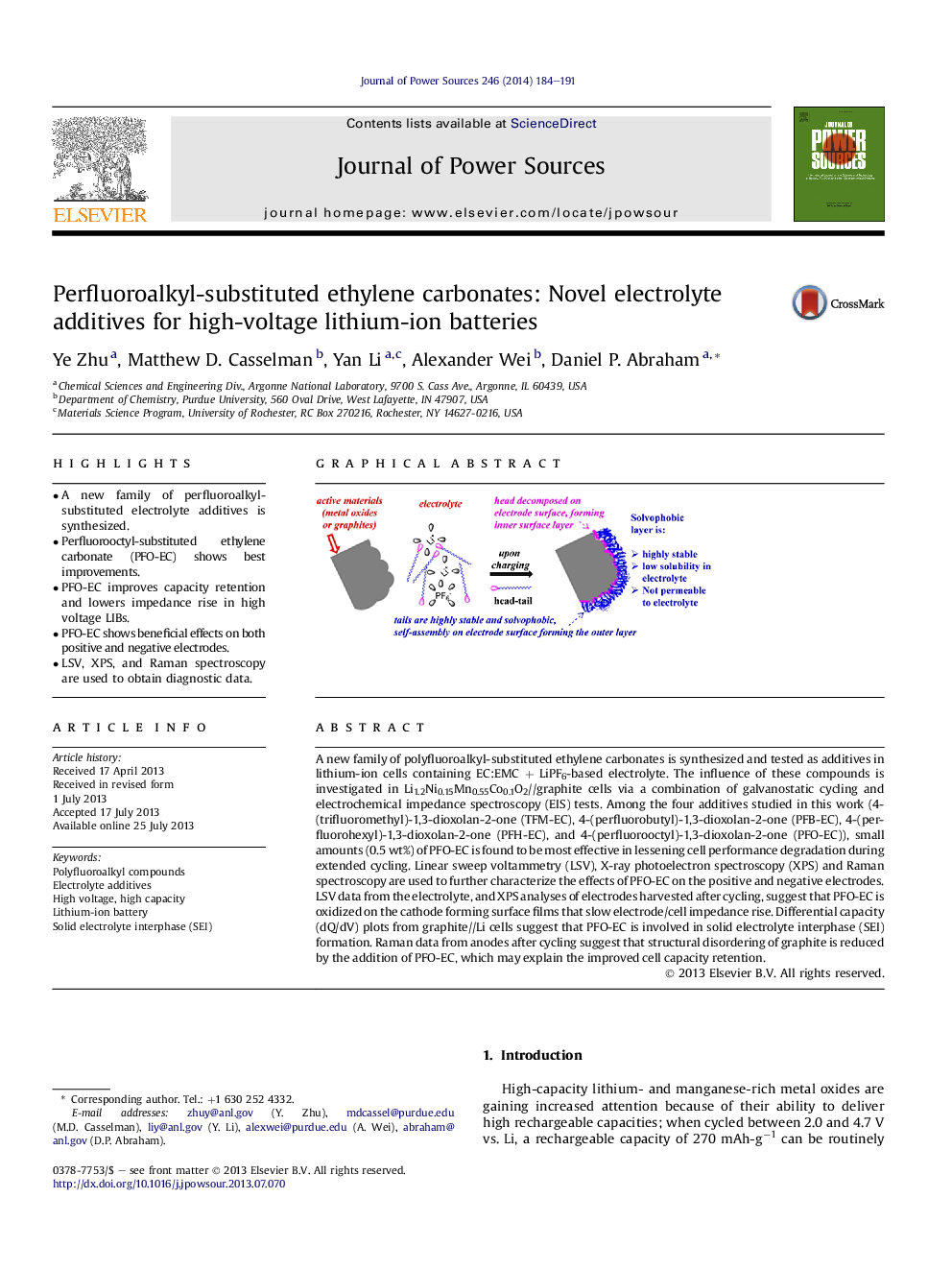| Article ID | Journal | Published Year | Pages | File Type |
|---|---|---|---|---|
| 1284294 | Journal of Power Sources | 2014 | 8 Pages |
•A new family of perfluoroalkyl-substituted electrolyte additives is synthesized.•Perfluorooctyl-substituted ethylene carbonate (PFO-EC) shows best improvements.•PFO-EC improves capacity retention and lowers impedance rise in high voltage LIBs.•PFO-EC shows beneficial effects on both positive and negative electrodes.•LSV, XPS, and Raman spectroscopy are used to obtain diagnostic data.
A new family of polyfluoroalkyl-substituted ethylene carbonates is synthesized and tested as additives in lithium-ion cells containing EC:EMC + LiPF6-based electrolyte. The influence of these compounds is investigated in Li1.2Ni0.15Mn0.55Co0.1O2//graphite cells via a combination of galvanostatic cycling and electrochemical impedance spectroscopy (EIS) tests. Among the four additives studied in this work (4-(trifluoromethyl)-1,3-dioxolan-2-one (TFM-EC), 4-(perfluorobutyl)-1,3-dioxolan-2-one (PFB-EC), 4-(perfluorohexyl)-1,3-dioxolan-2-one (PFH-EC), and 4-(perfluorooctyl)-1,3-dioxolan-2-one (PFO-EC)), small amounts (0.5 wt%) of PFO-EC is found to be most effective in lessening cell performance degradation during extended cycling. Linear sweep voltammetry (LSV), X-ray photoelectron spectroscopy (XPS) and Raman spectroscopy are used to further characterize the effects of PFO-EC on the positive and negative electrodes. LSV data from the electrolyte, and XPS analyses of electrodes harvested after cycling, suggest that PFO-EC is oxidized on the cathode forming surface films that slow electrode/cell impedance rise. Differential capacity (dQ/dV) plots from graphite//Li cells suggest that PFO-EC is involved in solid electrolyte interphase (SEI) formation. Raman data from anodes after cycling suggest that structural disordering of graphite is reduced by the addition of PFO-EC, which may explain the improved cell capacity retention.
Graphical abstractFigure optionsDownload full-size imageDownload as PowerPoint slide
